- Home
- Alison Weir
Mary Boleyn: The Great and Infamous Whore Page 15
Mary Boleyn: The Great and Infamous Whore Read online
Page 15
As has been noted previously, in 1533, George Throckmorton, a Catholic MP who had opposed Henry VIII’s Reformation legislation in Parliament, had the impudence to tax the King with having “meddled” both with Lady Boleyn and her daughter Mary before pursuing Anne, to which Henry replied, tellingly, “Never with the mother.” It was Thomas Cromwell who added diplomatically, “Nor never with the sister either, and therefore put that out of your mind.”7
By the 1530s the Spanish ambassador, Eustache Chapuys, was well aware that Henry’s relations with Mary created a bar to his marriage to her sister Anne, while in 1535, John Hale, a supporter of Katherine of Aragon, was to report gossip that Mary Boleyn had borne the King a son.8 By the reign of Anne’s daughter, Elizabeth I (1558–1603), the affair had become common knowledge and was mentioned by several writers.
In the early 1520s, Henry VIII was in his glorious prime, but married to an aging, childless, and increasingly pious wife. Henry had enormous respect for Katherine, and may still have loved her, but it is probably fair to say that “she no longer satisfied the desires of a virile man just entering his thirties.”9 With his former mistress, Elizabeth Blount, now married and fully occupied with childbearing, the King, it seems, was ripe for an affair.
It has often been suggested that Mary Boleyn was the reason why the King had lost interest in Elizabeth Blount, or that, once Elizabeth had fallen pregnant and was no longer available sexually, Henry had looked elsewhere. One popular theory, first put forward by Lingard (who, like Froude, gives the date of Mary’s marriage incorrectly as January 1521), is that Mary became Henry VIII’s mistress at that point, before her marriage, and that she was married off to William Carey because he was insignificant—enjoying, according to one fanciful account, only “a small place at court”10 and prepared to be a sensible, pragmatic, and complacent husband.11 The marriage is said to have been hastily arranged by the King for his mistress “to cloak their affair.”12 It is also said that that Carey “knew all about the affair from the beginning, and was as willing as Mary to comply in order to gratify the King”;13 and even that Mary was married off “as a precaution” against an illicit pregnancy14 and “to protect her honor.”15 It has further been asserted that “it is almost certain that she was already Henry’s mistress by this time.”16 Is it?
With very little evidence to go on, historians differ considerably in dating the affair, variously placing its commencement within the fifteen years from 1510 to 1525.17 With such a broad suggested date range, it is small wonder that there has been much confusion as to when Mary’s affair with the King flourished. Going on the sparse surviving evidence, it probably began after Mary’s marriage.18 William Carey, as we have seen, was far from insignificant, and the facts would argue against his having been chosen as Mary’s bridegroom just because he was willing to be a compliant husband.
The few pointers we have suggest that Mary attracted the King’s interest in 1522.19 The start of their affair has been the subject of much unsubstantiated, and often romantic, speculation: that Henry was attracted to Mary Boleyn because, like Elizabeth Blount, she was an accomplished dancer, eager to join in the pleasures in which the Queen was no longer interested;20 or that she resembled her mother, which was the real source of her attraction for the King.21 We cannot be certain that, after acknowledging his bastard by the unmarried Elizabeth Blount, Henry decided that affairs with married women were preferable;22 that hardly rings true in the light of his later pursuit of Anne Boleyn and other unmarried ladies. It has been suggested that, “turning from his aging wife, Henry lost his heart to Mary Boleyn”23—yet we have no means of knowing if his heart was involved at all, or that he “adored” Mary,24 as has been claimed. Others creatively imagine the King being attracted to Mary as “a wisp of passion, fresh and winning,”25 and suggest that it was in view of her French reputation, her “hint of French glamour,” and her being sexually experienced that she caught Henry’s eye.26 There is no evidence at all that Mary was “warmly recommended” to Henry VIII by François I.27
It has been thought extremely unlikely that Henry would have had anything to do with Mary if he knew she had been the mistress of his French rival, or was in any way promiscuous.28 We do not know if he was aware of her affair with François, although what we can surmise of his approach to Mary Boleyn suggests that he may have been—possibly having heard gossip, or even been told it by François himself, at the Field of Cloth of Gold, which is not inconceivable, given that Mary was present—and if he did, he perhaps found an added piquancy in appropriating for himself a woman who had graced his rival’s bed. Henry was not so nice in such matters as he was in his prudish attitude to marital sex. There has even been speculation that he quizzed Mary as to how he compared with François in bed.29
In the overheated imagination of Paul Rival, writing in the 1930s, it was Mary’s Boleyn blood that appealed to Henry, who noticed her “because of her gaiety, because she was in love with love, and because of other, more intangible things that lent an elusive savor to sentiment.” Rival, who believed that Henry had had an affair with Mary’s mother, opined that with Mary, “he recovered his adolescence,” discerning that “a tinge of incest” added its own piquancy. As for Mary, “life had made its mark on her: she was youthful, yet at the same time overmature … With the flesh of this gentle creature slept all the alluring sins of France. Henry, in the security of his rustic retreats, in the pauses between the songs of the nightingale, made it his pleasant business to awaken them. On [Mary’s] loving bosom, he pillowed his head. In her arms he savored a very peaceful happiness.” We are entirely in the realms of fantasy here, and there is much more of the same in the ensuing pages of Rival’s supposedly factual book.
Henry VIII’s relationship with Mary Boleyn probably flourished in the guise and play of courtly love.30 On March 2, 1522, the King held a tournament in honor of the ambassadors of the Emperor Charles V, who were then visiting England to arrange a marriage between the Emperor and Henry’s daughter, the Princess Mary. King Henry himself took part in the jousts, riding a horse trapped in silver caparisons embroidered with a wounded heart and the motto Elle mon Coeur a navera (“She has wounded my Heart”).31 Henry was an adept at playing the game of courtly love by the time-honored rules, which required a suitor to keep the identity of his beloved a secret, so we cannot be certain who it was that had wounded his heart, only that the lady likeliest to have been the object of such overt yet mysterious symbolism was Mary Boleyn. The date fits, as does the circumstantial evidence. It seems that Mary “had the King of England entirely enthralled”32—at least for a time.
Henry’s motto proclaimed the unkindness of the lady in rejecting his advances. It also conveyed the message that he was, or fancied himself, in love with her. What is more likely is that it was a ploy to make yet another sexual conquest.
Henry VIII was no doubt used to women succumbing to him. He was the King, and he was young, handsome, athletic and powerful, an irresistible combination. In 1519 a Venetian eyewitness had described him as “much handsomer than any sovereign in Christendom. Nature could not have done more for him; he is very fair and his whole frame admirably proportioned.”33 He was, wrote another, “the handsomest potentate I ever set eyes on: above the usual height, with an extremely fine calf to his leg; his complexion very fair and bright, with auburn hair combed straight and short in the French fashion, and a round face so very beautiful it would become a pretty woman, his throat being rather long and thick. He speaks French, English, and Latin, and a little Italian, plays well on the lute and virginals, sings from a book at sight, draws the bow with greater strength than any man in England, and jousts marvelously. He is in every respect a most accomplished prince.”34
Henry, who was aware of his own attributes and very vain, probably expected Mary to submit to him without a qualm, but it seems that she was not easily persuaded. Maybe the fact that she was now a married woman and feared to offend her husband had something to do with it; or she loved Wil
liam and shrank from betraying him. Possibly she had regretted her brief affair with François I, and did not want to invite notoriety at the English court, having narrowly avoided it at the French one. Perhaps she didn’t want Henry in the way he wanted her. Maybe her sister was warning her not to get involved—given Anne’s later refusal to become Henry’s mistress until marriage was within her sights, this is a real possibility.
It may be significant that the first of a series of royal grants to William Carey was made in February 1522.35 Of course, this could have been pure coincidence, an award made on William’s own merits, which would not have been unexpected, given his past career and his closeness to the King. But it could also have been a discreet incentive to William’s wife, with the implicit message that, were she to be kind to her royal suitor, he was prepared to be generous in return. Given that she was a married woman, Henry could hardly have made grants to her directly; but a grant made to her husband would benefit her too, and serve as compensation to the cuckolded William, whether or not he knew of the affair.
Anne Boleyn had just then returned from the French court,36 her departure having become necessary after war broke out between England and France. Maybe there was “another happy reunion” between Anne and Mary,37 but that is pure speculation. By March of that year, Anne was officially attached to the royal wardrobe,38 and “her father made such means” that she was soon appointed a maid of honor to Katherine of Aragon.39 Before long she had made herself noticed: “there was presented to the eye of the court the rare and admirable beauty of the fresh and young Lady [sic.] Anne Boleyn, to be attending on the Queen.”40 But it was not this Boleyn sister who captured the King’s attention at this time.
Only two days after the tournament, on Shrove Tuesday, March 4, Mary and Anne were present at a great feast given by Cardinal Wolsey in honor of the King, the Queen, and the ambassadors at his London house, York Place. When dinner was over, the hall was cleared and a pageant was performed, entitled—most appositely—“The Assault on the Castle of Virtue,” and costing £20 (£7,500) to mount.41 A large model of a castle called Le Château Vert was wheeled into the hall. Painted green, it had three towers, from which hung banners: one depicted three broken hearts, one a lady’s hand holding a man’s heart, and the other a lady’s hand turning a man’s heart—all possibly significant symbols, given the King’s “wounded heart” of two days before. One might even be tempted to speculate that the whole thing had been designed to turn Mary Boleyn’s heart.
From this castle sprang eight ladies, including Mary Tudor, “the French Queen,” Gertrude Blount, the young Countess of Devon,42 “Mistress Anne Boleyn, Mistress Carey,” and “Mistress Parker,” each clad in a gown of white satin embroidered with Milan-point lace and gold thread. On their heads these ladies wore “silk cauls of diverse colors” costing 2s.8d (£50) each, and Milanese-style bonnets of gold encrusted with jewels. The eight ladies all had “strange names” embroidered in gold on their headgear and on the twenty-four yellow satin labels that were attached to each gown. Mary Tudor, who knew the Boleyn sisters fairly well, led the dancers as “Beauty”; Gertrude Blount was “Honor”; Jane Parker, the daughter of the erudite Henry, Lord Morley—she was to marry George Boleyn within two years—was “Constancy”; Anne Boleyn was “Perseverance”; and Mary Boleyn was “Kindness.” Those names seem in retrospect to have suited the Boleyn sisters rather well,43 and perhaps Mary had chosen hers to convey a message to her royal suitor—or it had been chosen for her.
Beneath the castle there appeared eight choristers of the Chapel Royal disguised as “ladies whose names [Hall gives only seven] were Danger, Disdain, Jealousy, Unkindness, Scorn, Malebouche [Sharp Tongue], and Strangeness, dressed like Indian women” in black bonnets. Then eight lords entered, wearing cloth of gold hats and great cloaks made of blue satin. They were named Love, “Nobleness,” Youth, Devotion, Loyalty, Pleasure, Gentleness, and Liberty. This group, one member of which was the King himself, was led by a man dressed in crimson satin sewn with burning flames of gold. His name was “Ardent Desire.” Was this an allusion to Henry’s amorous interest in Mary Boleyn? It seems likely, given the conceit that the King had been wearing at the tournament only two days earlier. Henry himself did not play Ardent Desire—that was probably the court musician and deviser of the entertainment, William Cornish—but nonetheless “the ladies were so moved by his appearance that they might have given up the castle.” Mary Boleyn may have been more moved than the others, for the whole theme of the pageant seems to have been an allusion to the King’s desire for her.
The “Indian” women cried out that they would hold the fort, but the gallant gentlemen rushed the fortress to an explosion of gunfire, while the ladies defended it by throwing comfits at the besiegers, or sprinkling them with rose water. The men in turn assaulted it with dates, oranges, and “other pleasurable fruits,” and thus in the end overcame it and forced the defenders to surrender. Then they took the ladies by the hand, led them down to the floor as prisoners, and danced with them. It may have been a heady—or daunting—experience for Mary, dancing in public with the King in front of the Queen and the whole court, with very few people being aware of Henry’s interest in her—or perhaps putting two and two together as they watched the couple together, especially “when they had danced their fill” and “everyone unmasked themselves.” Afterward there was “an extravagant banquet.”
Yet despite the message apparently conveyed by Mary in the guise of “Kindness,” she seems not to have gone to the King’s bed willingly—contrary to claims that she was “pliable, eager to please, and anxious to enjoy Henry’s caresses”44 or “enchanted once more by the glamour of royalty.”45 Maybe she was making the best of an impossible situation, fearing the consequences of refusing the King. Or maybe she was forced.
Cardinal Pole, who may have had access to secret documents relating to the affair in the Vatican Library, or enjoyed the confidence of the Pope, put it in no uncertain terms to the King, in his treatise of 1538, that he had “violated” Mary and then kept her for a long time as his concubine.
The word “violate” derives from the Latin violo—to violate—and violentia—meaning “violence, vehemence, force,” and also from the Anglo-French and Old French form, violence, meaning much the same things. By the late thirteenth century it meant using physical force to inflict injury or damage. During the fourteenth century it also came to mean “breaking,” as in breaking the law, or “offending,” as in offending against the law, or “outraging,” “attacking,” or “assailing.” By the mid-fifteenth century, when used in relation to a woman, it implied rape, ravishment—which could also mean abduction—or sexual assault. It was only in the late sixteenth century that the word was debased to mean “improper treatment.” Thus in Mary Boleyn’s time, where women were concerned, the word “violate” still held all its medieval connotations of rape, and it is likely that Reginald Pole was implying that Mary was taken by the King against her will, that she was forced to become his mistress, and that, in so doing, he had taken her from her husband, offended against the laws of the Church, and committed an outrage. This, together with Pole’s accusation that Henry had thereafter “kept” her as his concubine, implies that she had very little say in the matter, and undermines the suggestion that Mary became Henry’s mistress with the sole intention of obtaining honors and preferments for her family.46 On the contrary, maybe it was the prospect of possible future rewards that enabled her to make the best of a difficult situation.
An episode recorded in the state papers appears to support the possibility that Henry VIII was capable of taking a woman against her will and overriding any reluctance on her part. In September 1537 five men were interrogated on the orders of Thomas Cromwell, the Lord Privy Seal, after one William Webbe had been accused of treason. Webbe had complained to several people of an incident that had taken place two years before, when he was riding “a fair gelding with a pretty wench behind him” near Eltham Palace and encountered
the King out riding. Henry took such a fancy to the girl that he “plucked down her muffler and kissed her, and liked her so well that he took her from him, and so lived and kept her still in avoutry [adultery].” Webbe was furious and “cried vengeance on the King” to several of his acquaintances, one of whom reported him for being a traitor.47 It is possible that his “wench” was only too pleased to go with the King, but the description of Henry suddenly taking the girl, and Webbe’s reaction, suggest that Henry’s action was summary, and without thought for the sensibilities of either of them.
Webbe’s mistress was obviously from the lower orders of society, and therefore of little consequence, but Mary Boleyn, the daughter of a knight, was no common woman, and her very birth, and the fact that she was the wife of one of his favored courtiers, should have merited a certain respect. But Henry’s behavior suggests that these things counted for very little, as well as a certain disregard for the conventional sensibilities of ladies, all of which argues that he did know of her affair with François I; so respect clearly had its limits. Those pretty charades—the jousting motto and the elaborate allegory of the pageant—that almost certainly bear testimony to the King’s courtship—may purely have been aids to seduction. And from what Reginald Pole wrote, Henry did not take no for an answer for very long.

 Richard III and the Princes in the Tower
Richard III and the Princes in the Tower Britain's Royal Families: The Complete Genealogy
Britain's Royal Families: The Complete Genealogy The Lady in the Tower: The Fall of Anne Boleyn
The Lady in the Tower: The Fall of Anne Boleyn Six Wives of Henry VIII
Six Wives of Henry VIII Elizabeth of York: A Tudor Queen and Her World
Elizabeth of York: A Tudor Queen and Her World Captive Queen
Captive Queen Innocent Traitor
Innocent Traitor The Marriage Game
The Marriage Game A Dangerous Inheritance
A Dangerous Inheritance Katherine of Aragón: The True Queen
Katherine of Aragón: The True Queen The Marriage Game: A Novel of Queen Elizabeth I
The Marriage Game: A Novel of Queen Elizabeth I Princes in the Tower
Princes in the Tower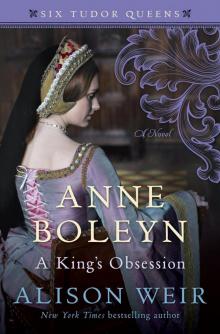 Anne Boleyn: A King's Obsession
Anne Boleyn: A King's Obsession Traitors of the Tower
Traitors of the Tower Mistress of the Monarchy: The Life of Katherine Swynford, Duchess of Lancaster
Mistress of the Monarchy: The Life of Katherine Swynford, Duchess of Lancaster Queens of the Conquest: England’s Medieval Queens
Queens of the Conquest: England’s Medieval Queens Eleanor of Aquitaine: A Life
Eleanor of Aquitaine: A Life Mary, Queen of Scots, and the Murder of Lord Darnley
Mary, Queen of Scots, and the Murder of Lord Darnley Henry VIII: The King and His Court
Henry VIII: The King and His Court Queen Isabella: Treachery, Adultery, and Murder in Medieval England
Queen Isabella: Treachery, Adultery, and Murder in Medieval England Katheryn Howard, the Scandalous Queen
Katheryn Howard, the Scandalous Queen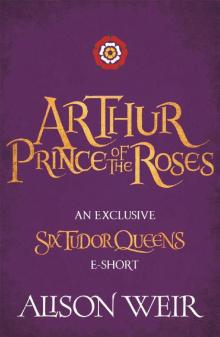 Arthur- Prince of the Roses
Arthur- Prince of the Roses The Wars of the Roses
The Wars of the Roses Eleanor of Aquitaine: By the Wrath of God, Queen of England
Eleanor of Aquitaine: By the Wrath of God, Queen of England Mary Boleyn: The Great and Infamous Whore
Mary Boleyn: The Great and Infamous Whore Jane Seymour: The Haunted Queen
Jane Seymour: The Haunted Queen Anna of Kleve, the Princess in the Portrait
Anna of Kleve, the Princess in the Portrait Lancaster and York: The Wars of the Roses
Lancaster and York: The Wars of the Roses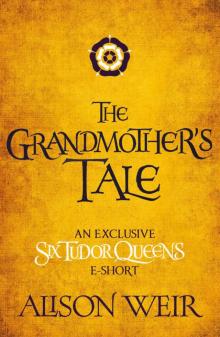 The Grandmother's Tale
The Grandmother's Tale The Princess of Scotland (Six Tudor Queens #5.5)
The Princess of Scotland (Six Tudor Queens #5.5) The Lady Elizabeth
The Lady Elizabeth Katherine Swynford: The Story of John of Gaunt and His Scandalous Duchess
Katherine Swynford: The Story of John of Gaunt and His Scandalous Duchess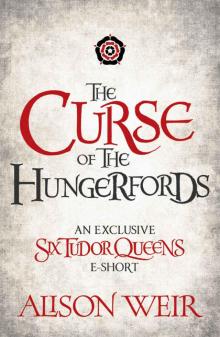 The Curse of the Hungerfords
The Curse of the Hungerfords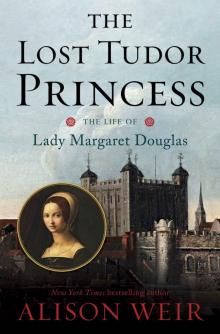 The Lost Tudor Princess: The Life of Lady Margaret Douglas
The Lost Tudor Princess: The Life of Lady Margaret Douglas Eleanor of Aquitaine
Eleanor of Aquitaine Mistress of the Monarchy
Mistress of the Monarchy The Lost Tudor Princess
The Lost Tudor Princess Henry VIII
Henry VIII Anne Boleyn, a King's Obsession
Anne Boleyn, a King's Obsession A Dangerous Inheritance: A Novel of Tudor Rivals and the Secret of the Tower
A Dangerous Inheritance: A Novel of Tudor Rivals and the Secret of the Tower Elizabeth of York
Elizabeth of York Katherine of Aragon, the True Queen
Katherine of Aragon, the True Queen Katherine Swynford
Katherine Swynford Wars of the Roses
Wars of the Roses Queens of the Conquest
Queens of the Conquest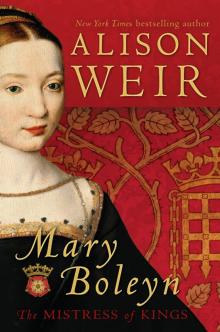 Mary Boleyn
Mary Boleyn Britain's Royal Families
Britain's Royal Families The Tower Is Full of Ghosts Today
The Tower Is Full of Ghosts Today Life of Elizabeth I
Life of Elizabeth I Anne Boleyn A King's Obssession
Anne Boleyn A King's Obssession Lancaster and York
Lancaster and York Jane Seymour, the Haunted Queen
Jane Seymour, the Haunted Queen Queen Isabella
Queen Isabella The princes in the tower
The princes in the tower